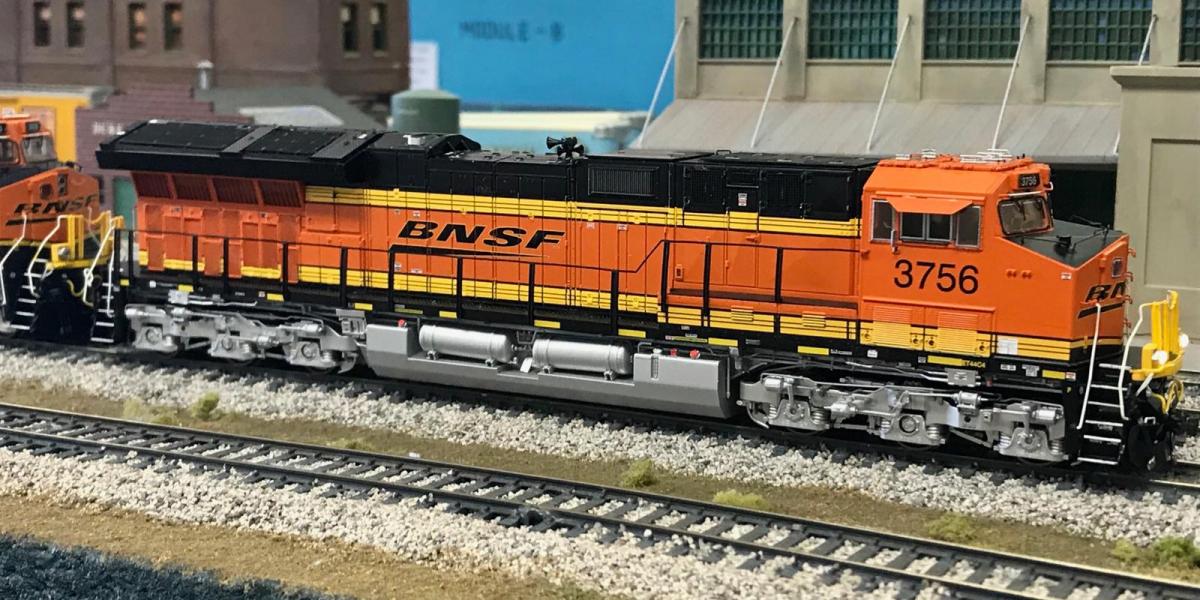Loading...
1519 view(s)
An Article by Steve Todd - All Photos by the Author
After being asked a few weeks ago by Drayton Blackgrove from ScaleTrains.com as to why I like the BNSF ET44C4 "Tier 4" locomotives so much, I gave it some thought and realized that my conclusion might make for an interesting "Time to Model" article. So, here we go! Here's why I consider the Tier 4 to be my favorite modern locomotive.
What specifically do I like about the Tier 4s:
When it comes right down to specific reasons for my interest, there are actually several. I guess the obvious things that appeal to me is that the GE/Wabtec Tier 4s are the longest of the General Electric Evolution (GEVO) series of locomotives that BNSF has purchased. I’d also mention that the radiator cabinet - with its large angled sides, large radiators, and many air inlet vents - really make it unique and easily identifiable. Lastly, its exhaust is noticeably different from other GEVO models. Tier 4s also carry a prime mover sound that goes from very quiet at low RPMs to pretty darn loud at the higher revs!


Ok, so those are the things that make it my favorite modern locomotive. However, I believe there are many modelers and or railfans that just don’t have a clue as to what makes a Tier 4, well, a Tier 4! So, this might be a great place to take a really close look at just exactly what a GE/Wabtec Tier 4 actually is!
What Exactly Is a Tier 4 Locomotive?
The heart and soul of any locomotive is its diesel engine, which in the railroad world, is called a Prime Mover (PM). In the case of the GE/Wabtec Tier 4, it’s their cleanest burning engine yet!
So, just what does Tier 4 actually stand for? Well, the 21st Century ushered in U.S. Environmental Protection Agency (EPA) air quality and pollution regulations, and standards for all internal combustion engines. These emission standards dictated stringent maximum allowable pollution levels for all engines/motors, including the diesel motors used in locomotives.
The Tier level system denotes the increasingly tougher EPA standards that have progressed from Tier 1 to Tier 4. Tier 4 emissions standards, represent the most restrictive level of acceptable pollution levels in the land, for locomotives as part of our nation’s efforts to reduce carbon emissions.
Meeting EPA Standards:
GE/Wabtec (now called Wabtec Freight) have worked continually to not only meet these Tier level standards but to actually produce locomotive PMs that are more efficient as well as producing fewer emissions. In fact, the Tier 4 produces more than 90 percent less particulate matter and oxides, than the diesel locomotives produced just 15 years ago!
How they met the Tier 4 standards is a story of its own! However, I’ll only try to explain some of the major points.
GE took the highly successful FDL (Freight Diesel Locomotives) PM from its previous GEVO series and completely redesigned it. Their reason was simple, build a brand new, more efficient, and cleaner PM. One that would meet and or exceed the current Tier 4 standards.
They started with a clean sheet of paper for the new PM. Although it is a logical progression of the time-tested GEVO FDL 12-cylinder engine, it’s built on a completely new design - beginning with its larger, longer, and heavier cylinder block. The block is over a foot longer than previous GE PMs, primarily due to its more robust design. It features a longer and stronger crankshaft. To continue with the strengthening effort, it also has a larger and wider crankshaft and connecting rod bearings.
The Tier 4 uses a new “High-Pressure Fuel Pump” on its “Common Rail Fuel Injection” system. The extremely efficient fuel injection system from the previous GEVO engine was improved further by moving the injectors from the side of the power assembly head to the top of the head. The new system results in more precise control over the fuel injectors. Additionally, multiple injection events in the same piston stroke not only increase emission efficiency but also control the exhaust note/noise.
Two Turbochargers:
Unlike the single large turbo of previous designs, the new engine also features compound turbocharging which incorporates two turbochargers (one small and one large). The small turbo is the high-pressure one, and the large turbo is the low-pressure one. Both turbos send their air to a charge air cooler (intercooler) for cooling down before sending the cooled air to the next turbo or air inlet.
The EGR system:
The new engines use a revolutionary new Exhaust Gas Recirculation (EGR) system. It lowers emissions by using some of the exhaust gases to supplement the intake of air prior to combustion. As these gasses are extremely hot, they are first forced through a large heat exchanger or “EGR Cooler” which is located under the turbos toward the conductor’s side of the engine cab for cooling. Engine coolant is also used to cool the exhaust gasses that pass through the EGR Cooler. A sight gauge for checking the coolant level is located on one of the conductor’s side, rear-engine cab doors (nicely reproduce on the SXT Tier 4 models).
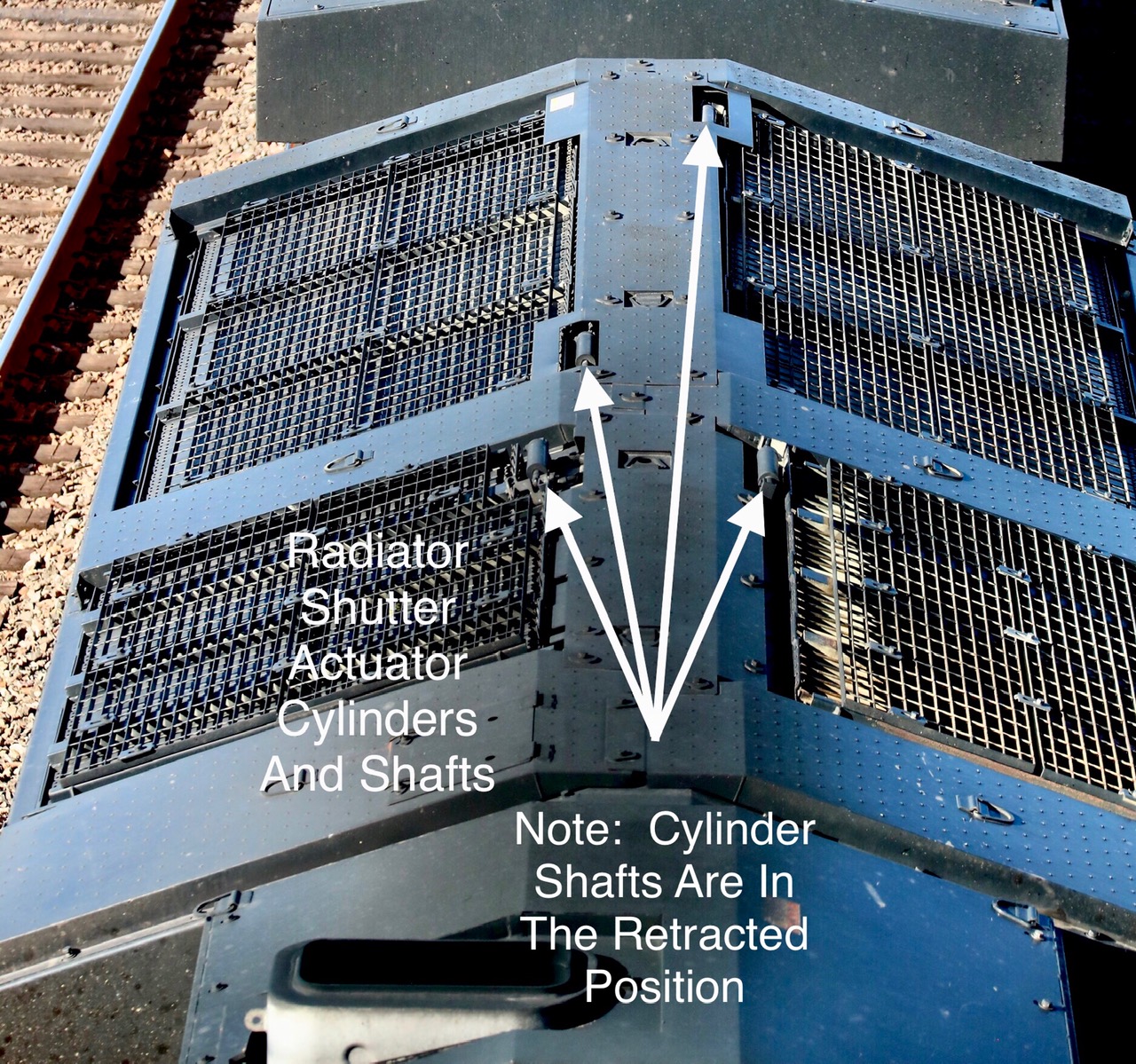

Big Radiators:
Speaking of cooling, the new Tier 4 incorporates the largest Radiator system used on the GEVO series of locomotives. The radiators are housed in a huge A Frame-looking cabinet. Unlike previous GEVO models, two cooling fans are now required to pull the outside air up and through the massive radiators. Four air cylinder shutter actuators are used to open and close the large panels of shutters. These a visible on the top surfaces of the radiators. Four large cooling air intakes vents line the sides of the huge radiator cab, ensuring adequate air is supplied for the cooling process. Incidentally, the new Tier 4 PM’s exhaust cooling system is so efficient that the engine exhaust is actually cooler than the radiator exhaust air!
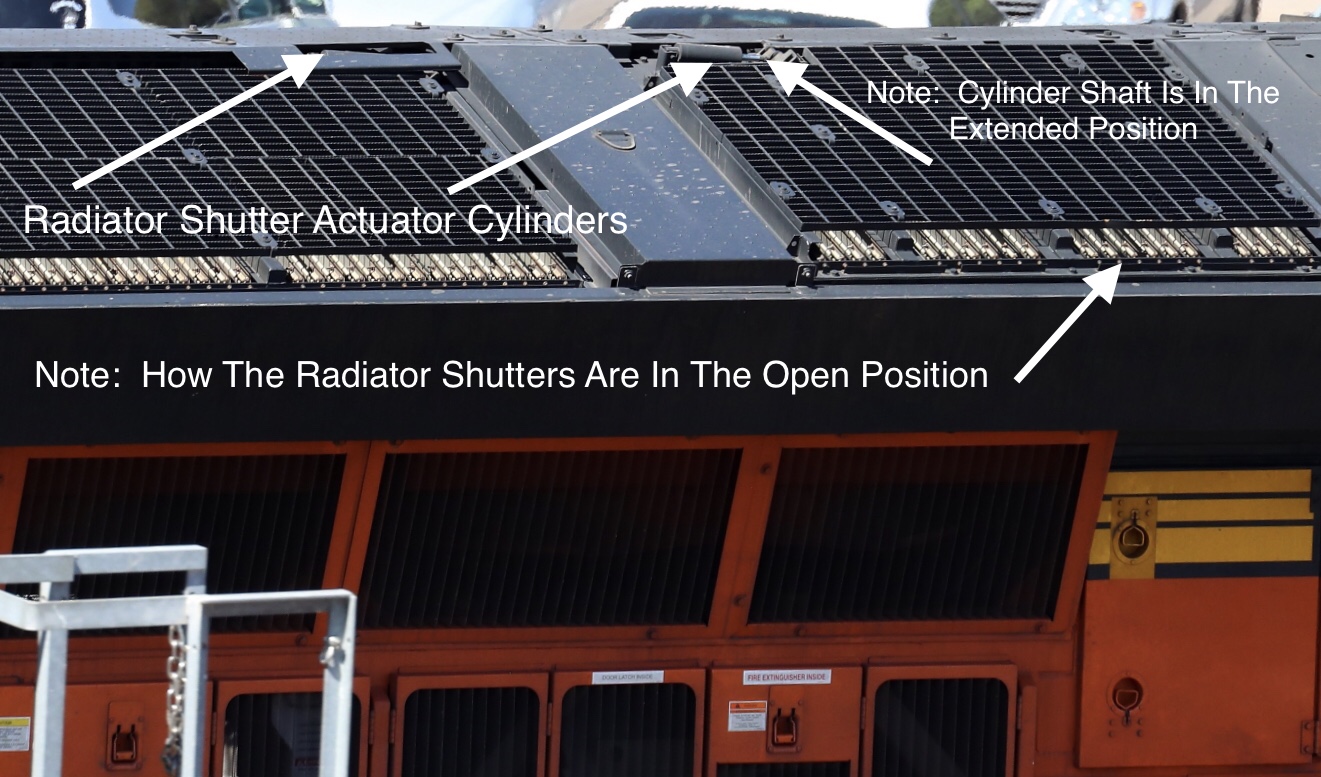

Only One Alternator:
As the locomotive is powered by electricity, engine power must be converted to electrical energy. To do this, the engine’s crankshaft is connected to a large electrical Alternator.
The alternator produces the electrical energy needed to power the locomotives Traction Motors, which in turn, drives the locomotive's axles. What’s new about the Tier 4, is that its alternator also powers all of the onboard electrical needs. This differs from the other GEVO’s that use an auxiliary alternator for ancillary electrical power.
Where'd the "Humpback" Engine Cabinet Go?
After extensive field testing of the preproduction Tier 4 demonstrators. The units were found to easily meet the current Tier 4 emission standards without the need for any further exhaust gas treatment equipment. During the design and installation on early production models, the original engine cabinet was built with extra space (humpback) to house possible additional emission reduction equipment. Fortunately, that equipment was not needed, and the cabinet was lowered.
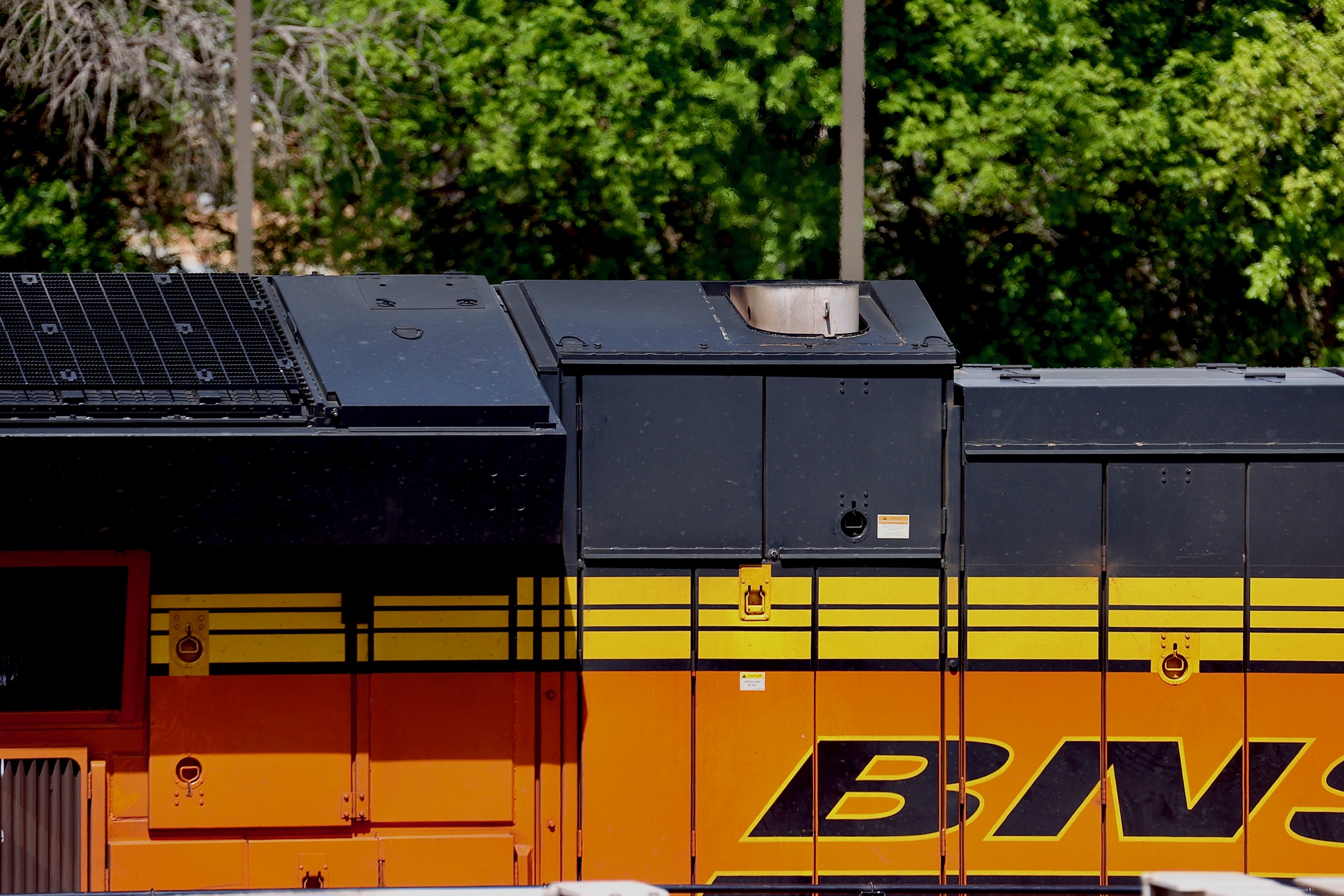

Comparison of current production models with the preproduction models highlights the higher cab design of those early models. A further change was made to the square exhaust cabinets of early production Tier 4s, to reduce the height and to add tapering to the exhaust cabinet’s sides. This was done to improve clearance on some Railroad’s coaling facilities.
There are other features of the Tier 4 that distinguish it from previous GEVO locomotives. However, for the purpose of this writing, I believe we’ve covered the big ones. Although I specifically reference BNSF ET44C4, most of the data apply to other Tier 4 models which are used by several other Class 1 Railroads.
What Does the Future of Locomotive Development Look Like?
In this ever-changing world we live in, the next major change to locomotives to meet future emission standards just might be of a hybrid design with some sort of diesel and battery power. Wabtec has successfully demonstrated their all-electric demonstrator locomotive in extensive testing with BNSF and full-scale production may just be around the corner. So who knows! The GE/Wabtec Tier 4s might mark the end of an era of a new design for diesel powdered locomotives!
ScaleTrains Tier 4 HO Scale Models:
As you may have seen in some of my posts about ScaleTrains.com (SXT) HO locomotives, you know I’ve expressed how much I appreciate their efforts in making improvements to their Tier 4s with each new production run.
The part of the hobby I enjoy the most is adding additional details to models to reflect the look and features of the prototype. And SXT has incorporated several of the details I’ve identified and scratch-built or enhanced myself into their new runs. That shows me the seriousness of their desire to produce the most accurate models, being made today! Just the fact that they changed to BNSF orange on their loco models to the correct shade reinforces my belief in just how serious they are to “getting it right!”
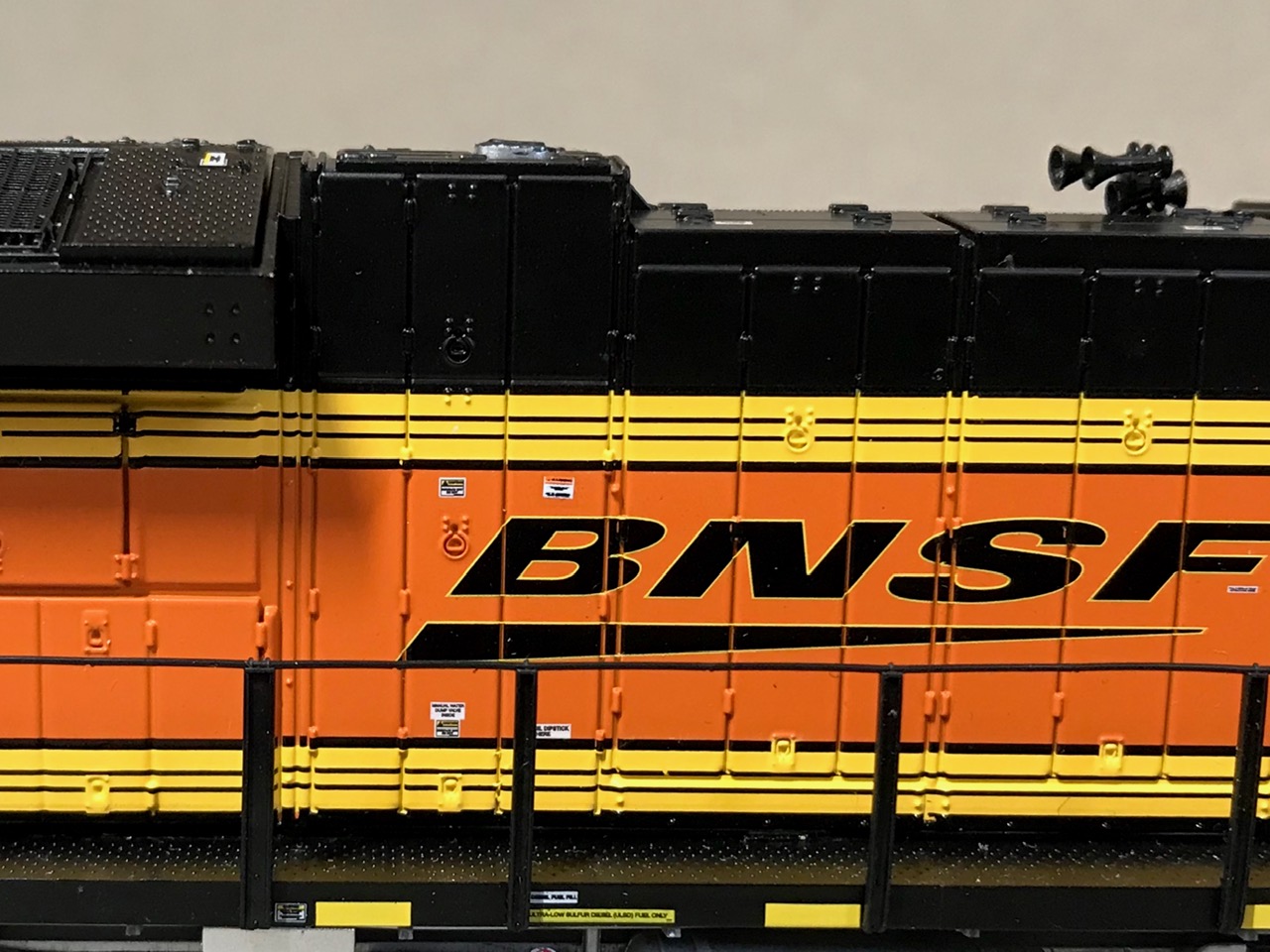

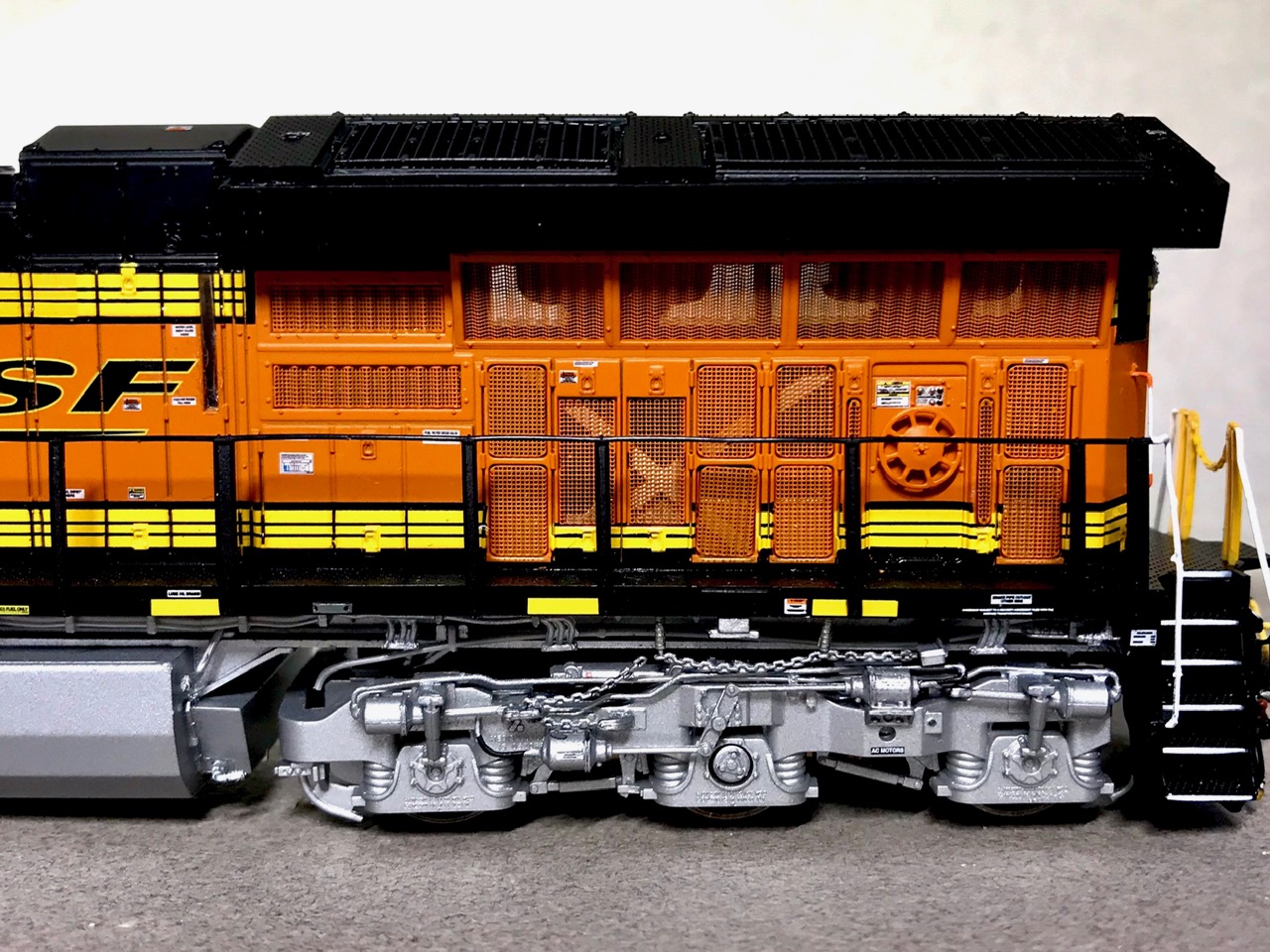

On the downside, adding details to their production models makes my job of adding details much simpler and less extensive! Not that that's a bad thing! I’ll always have detailing to add, as adding the details I spend hours accomplishing to a production model would drive up the price of the model to an unreasonable level. Plus, it would deprive me of enjoying a big part of my hobby!
Well, that pretty much sums up why I consider the Tier 4 my favorite modern locomotive. I hope the information was helpful and somewhat entertaining as well.
The Tier 4 information I referenced in developing this article was found in GE/Wabtec articles on their Tier 4 and in other published locomotive data.
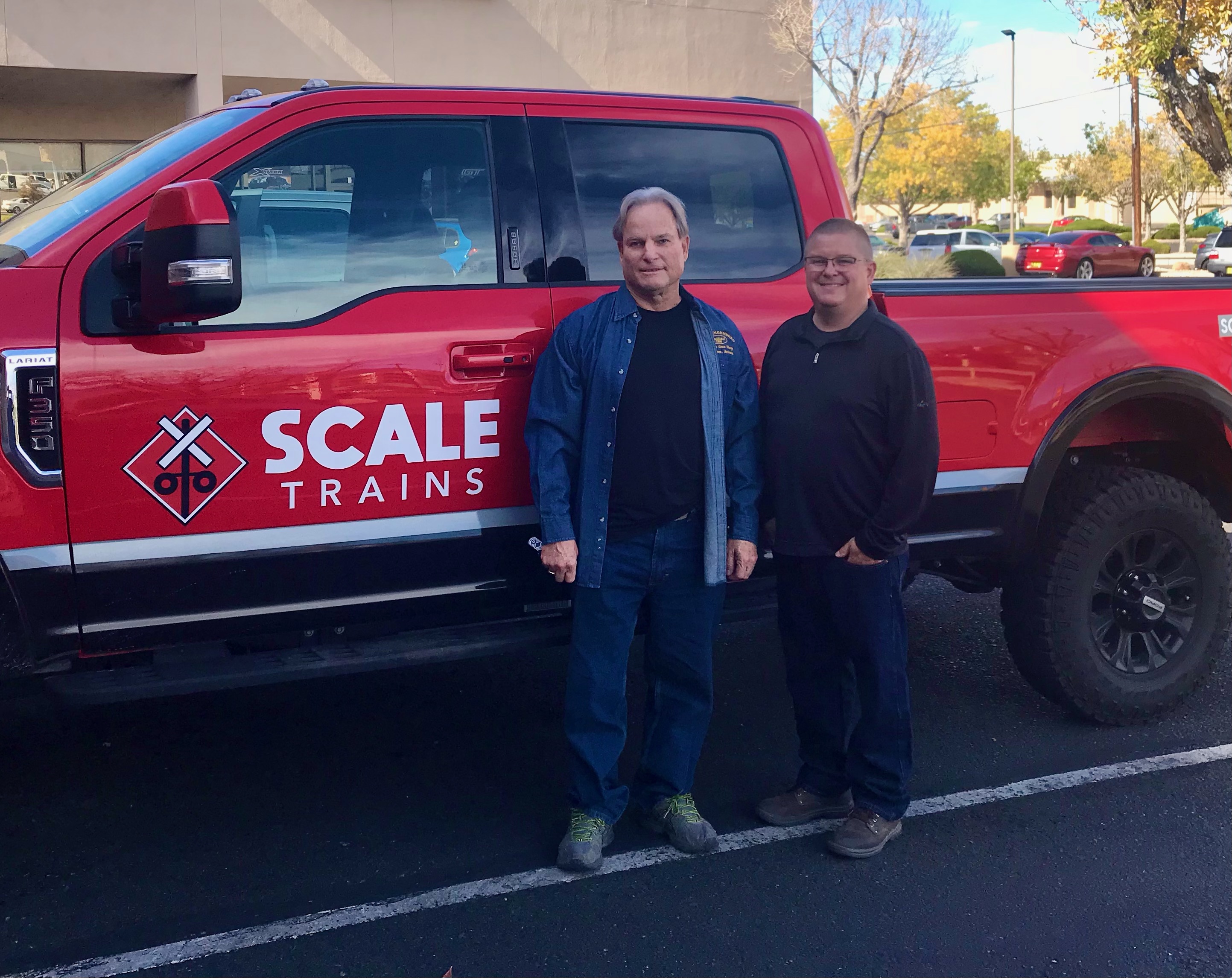

Steve Todd is a retired Chief Master Sergeant of the United States Air Force and lifelong railfan who lives in Albuquerque, New Mexico. Steve also worked for Amtrak as a passenger conductor for nearly a decade. He currently spends his retirement enjoying the hobby of model railroading.







